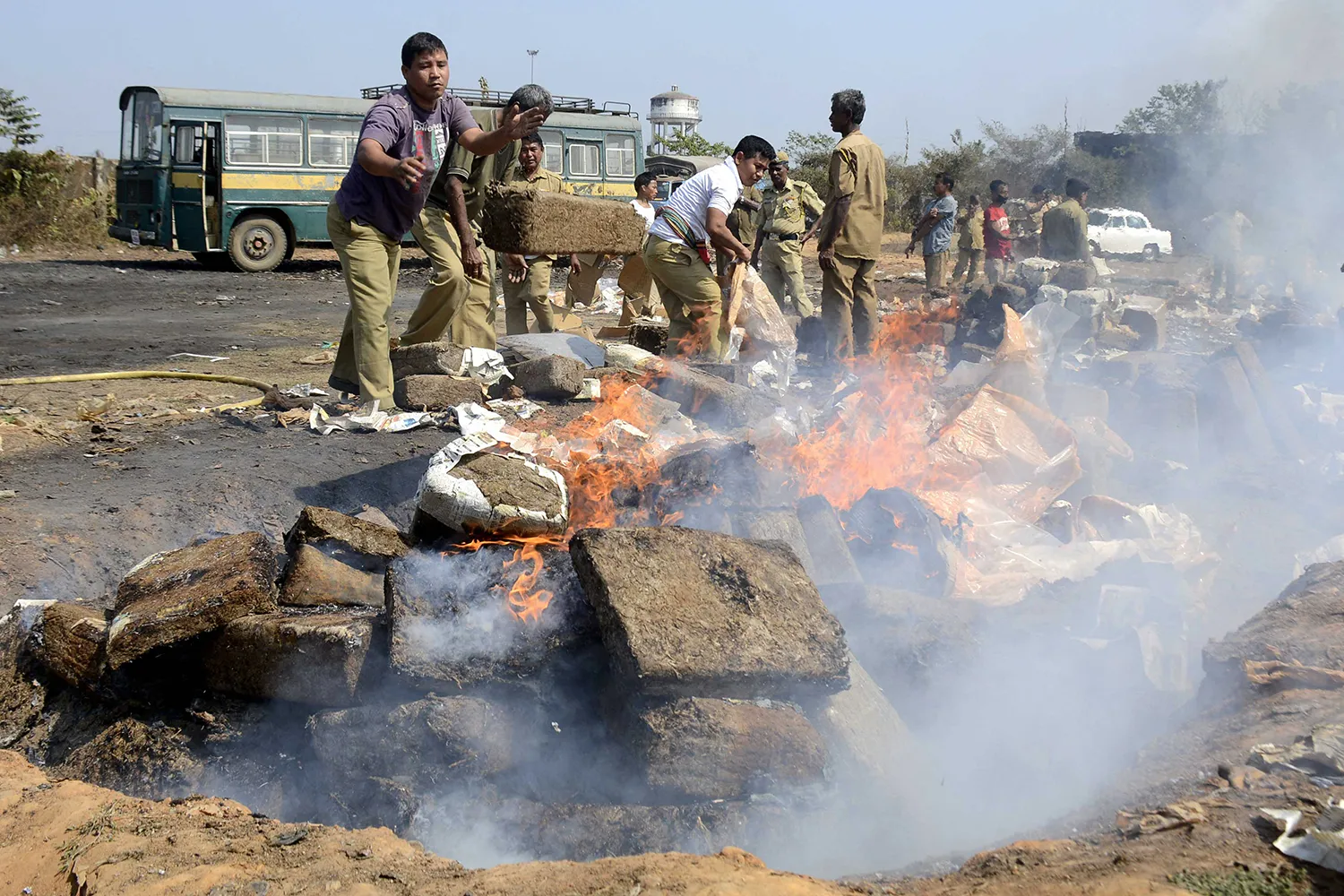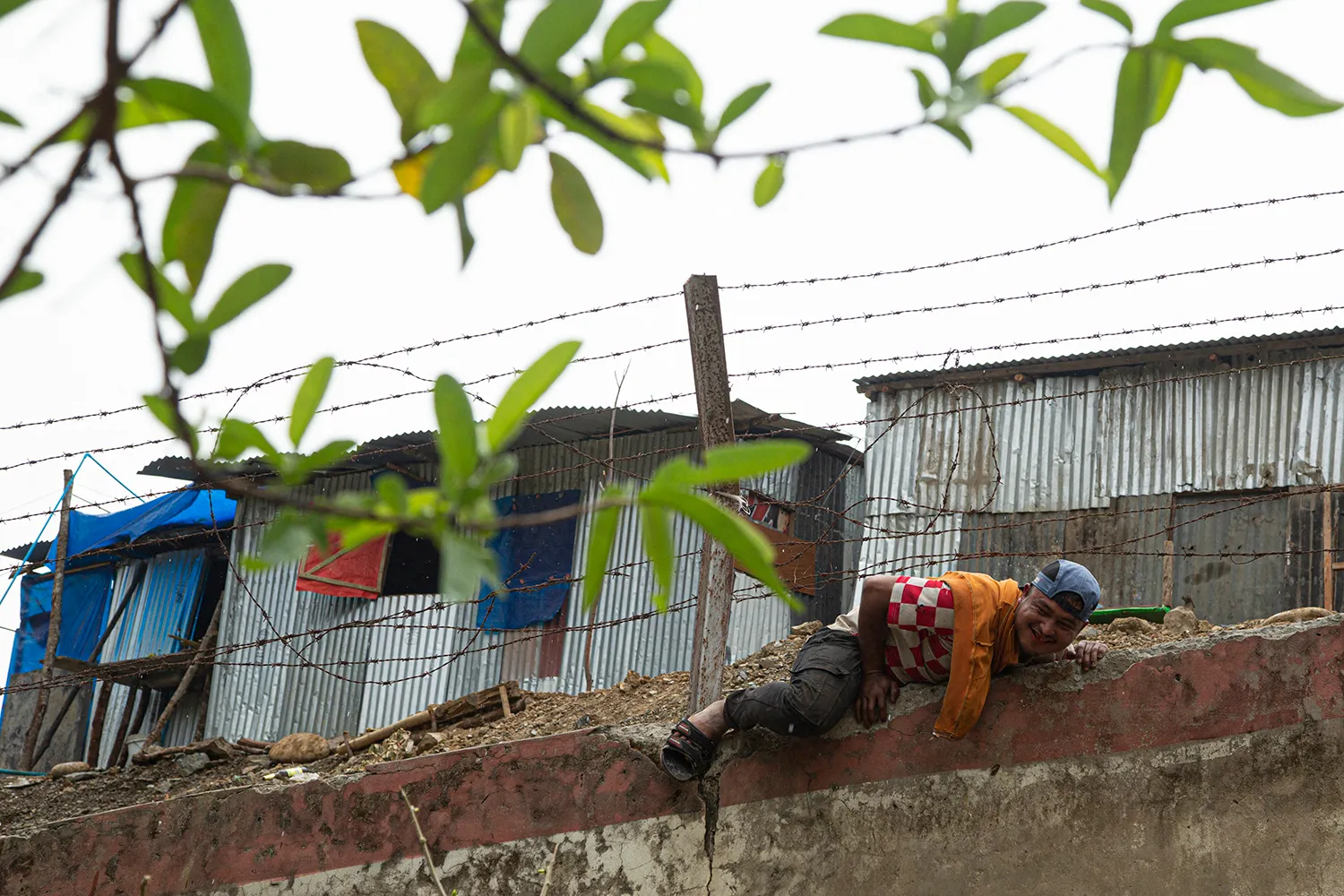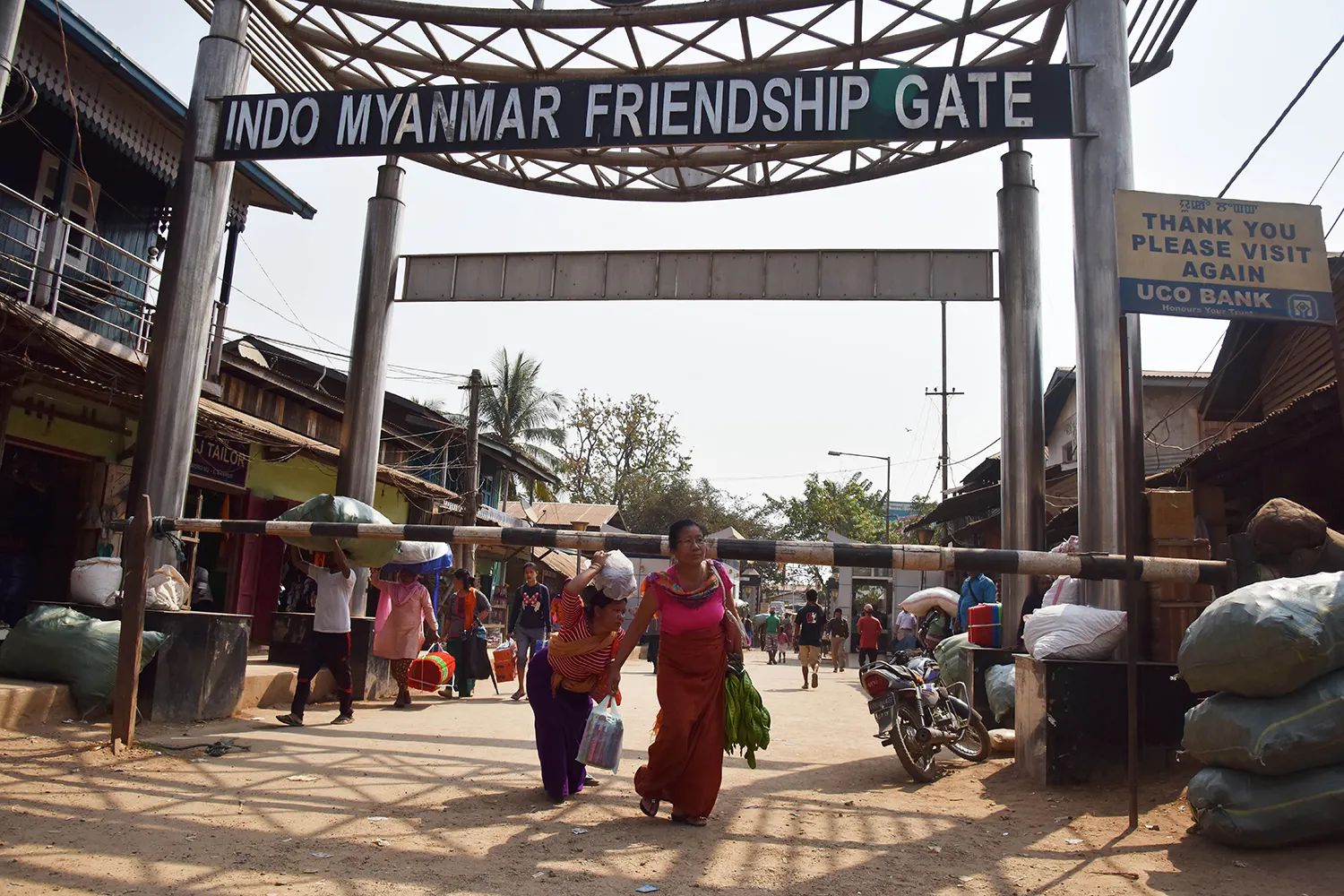Along the Tiau River that divides Mizoram in India from Chin State in Myanmar, get-togethers by the water are a common weekend pastime. Since alcohol sales are banned in Mizoram, people from the Indian side travel across the dried-up riverbed, music blasting from their cars, to buy alcohol in Myanmar. Further north, in the village of Longwa in Nagaland, the border passes, literally, through the house of the village chief.
A proposed thousand-mile fence along the mountainous India-Myanmar border threatens to disrupt the weekend parties—as well as trade, migration, historical and other cultural ties—all under the banner of security. The government of India, which has proceeded with its plans largely without the involvement of Myanmar’s central government, argues that the fence will curb smuggling, insurgency, and illegal migration issues, and mirrors a growing trend of fencing across the world, from the U.S.-Mexico border, to Europe, North Africa, and Southeast Asia. (Asia now has the largest share of border walls globally, at 56 perfect.) Since the end of the Cold War, the number of border walls and fences worldwide has sextupled, from just a dozen in the late 1980s to at least 74 today. In the European Union alone, the total length of border fences increased from 195 miles in 2014 to more than 1,200 miles by 2022. Six out of 10 people now live in a country that has built walls on its borders.
This surge has been driven by a mix of geopolitical tensions, rising nationalism, migration anxieties, and the securitization of borders in the post-9/11 era. A global industry has emerged in tandem, with billions of dollars flowing into surveillance technologies, construction contracts, and the pockets of private security firms. The global border security market is valued at $49.55 billion in 2025 and is projected to grow to $63.61 billion by 2029. India’s fencing initiative along the Myanmar border is part of a global infrastructure boom that reflects a wider shift toward physical deterrence and exclusion as dominant tools of border governance.
But do fences work? Research on smuggling and fencing across the globe, as well as on-ground accounts gathered from smugglers, security forces, and people living at the border of India and Myanmar indicate that, on the contrary, they likely shift criminal dynamics, destabilize border communities, and have far-reaching implications for regional trade relations.

According to the Indian government, the fence is part of a broader effort to enhance security, curb illegal activities, and improve infrastructure in the northeastern region—which will also reduce the movement of arms, drugs, and counterfeit goods between India and Myanmar. The conflict in Myanmar has led to the movement of people fleeing the violence into Mizoram, and with this movement, the smuggling economy at the Mizoram-Myanmar border is indeed thriving. At this one crossing alone in the last two years, data from Indian security forces shared with the author shows that over $277 million was seized in drugs—primarily heroin and methamphetamine. (And by their own account in interviews, Indian security forces are able to seize only about 5 percent of what passes through.) With the neighboring state of Manipur in northeast India in the throes of an ethnic conflict and with Myanmar embroiled in civil war, arms trafficking is on the uptick as well.
With this surge of contraband, drugs, and arms, it is easy to understand why many Indian security personnel, tired of patrolling this hilly, porous border, see fences as a welcome solution. The Indian paramilitary in the border areas between India and Myanmar, stretched thin by their primary duties as a counterinsurgency force, often view the responsibility of curbing smuggling as an additional burden. Many admitted, however, that the difficulty in stopping smuggling comes not simply from the porous border itself, but largely from corruption on the Indian state side that enables the trade.
Far from a state-versus-smugglers dynamic, there exists a complex and often symbiotic relationship between smugglers and various state actors at the India-Myanmar border. It is driven by demand for both licit and illicit goods by the many individuals who profit from facilitating their movement, with some even paying large sums for official postings that allow them to collect bribes. Fencing the border is unlikely to eliminate this corruption; it will instead shift who benefits from it and alter the landscape of who can afford to participate in these businesses.

Research on smuggling in other regions of the world highlights that it is frequently regulated by state actors, with varying degrees of formality and enforcement. In Southeast Asia, for instance, certain smuggling routes are tacitly sanctioned by local authorities, who may rely on informal arrangements with smugglers to supplement their income or maintain control over volatile regions. Similarly, in North Africa, states have often tolerated certain activities and drawn on various informal arrangements to effectively structure large smuggling economies in line with their wider interests. Their experiences suggest that border fortifications like fences may not simply disrupt smuggling networks but instead reconfigure them, potentially consolidating power among more organized and well-connected actors while marginalizing smaller, less-resourced participants.
Perhaps that is why in interviews, a well-established smuggler at the India-Myanmar border did not seem overly concerned on how the fence might affect his various large-scale operations. Another informant, a member of the Indian security forces overseeing operations in a border area said that, “for big smugglers who are making crores, no amount of deterrents like fences will work.”
For small-time informal traders, however, it will be a different matter. As one of them asserted, “For a small businessman, it is always better to have no fence.” As another local trader explained: “The local will always do their business informally.” Referring to the deep cultural and kinship bonds across the border region, he further described how, because of a fence, “socially, the bond will be broken … then, economically too.” The more optimistic among the traders expect the government to show a degree of pragmatism. “They understand that small traders will need to continue to survive,” said one border businessman, expressing how he expects a degree of ambiguity, negotiation, and understanding to continue despite any proposed fence.
As border infrastructure has proliferated across the globe in recent years, research in different countries and borders has highlighted that infrastructure like fences represent an increase in the cost of smuggling—either in the technological costs of moving goods across barriers or the costs of moving it through relationships with security forces. For more highly capitalized networks trading in arms or drugs, this is often more manageable, and perhaps an incentive to specialize or collaborate. For survivalist smugglers in border regions often trading in licit goods and foodstuff, fencing can represent an insurmountable hurdle.

Historically, the movement of goods, people, and ideas—including the religions of Hinduism and Buddhism—between India and Southeast Asia dates back to ancient times. Now, the Act East policy, initiated by Narendra Modi’s government, aims to strengthen these economic ties, enhance strategic partnerships, and foster cultural exchanges with Southeast Asia. In this context, the idea of a fence that physically and symbolically divides communities and undermines regional integration is puzzling. The contention is that fencing will make the border safer and thereby lead to more formal trade. Some traders dealing in licit goods at the border shared this view. “We might suffer at first but eventually the fencing will promote legal trade,” hoped a businessman who believes that the fence could help curb the drug problem residents of border towns are facing while allowing legal businesses to go through.
However, there is strong academic evidence that fencing also reduces formal trade. Studies find, for example, that countries separated by a border wall are associated with a 31 percent reduction in trade between neighboring nations. The border fence at the India-Myanmar border is likely to significantly inhibit legal cross-border trade by heightening “border effects” and making formal trade more difficult.
Far from resolving the complex challenges of smuggling, insurgency, and migration, this physical barrier is likely to reconfigure and potentially further organize criminal smuggling networks to disempower small scale traders and to disrupt legitimate trade. By the river that divides these two countries, and amidst the car-parties that unite them, a local trader, armed with a glass of across-the-border Burmese alcohol, shared his concerns. “From the government of India perspective, it may sound great, but for those of us on the ground, it will create chaos.”
Max Gallien of the Institute of Development Studies and Florian Weigand of the Centre on Armed Groups contributed to this article.
The post Do Good Fences Actually Make Good Neighbors? appeared first on Foreign Policy.




